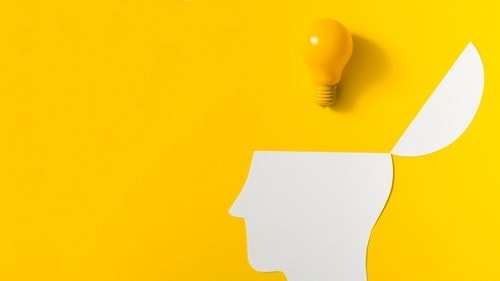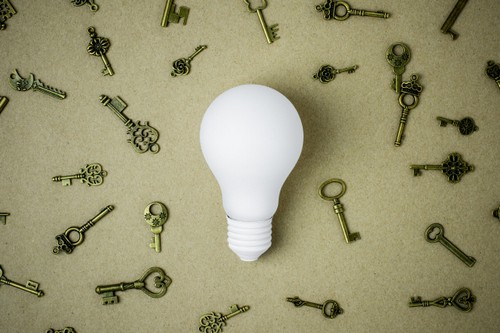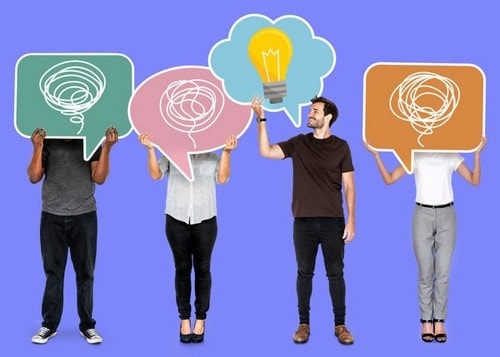Creativity is the term that has become quite popular in the past few decades. Creativity is one of the most essential traits that every employer desire while hiring an employee. It is important in almost every aspect of life, right from feeding a child to almost every aspect of the business, creativity plays an exceedingly crucial role.
Table of Contents
What is Creativity?
Creativity is a process of development and execution which produces something new, original or different. Creativity is not merely an outflow of one’s knowledge and experience but also involves intricate cognitive neuroscience, which is the way our brand does decision-making and problem solving.
It is important to understand what is creativity and what is the psychology behind it. Studying and understanding of creativity is not easy. It is considered one of the most complex topics to study by the psychologists. In this article, you will learn about the psychology behind creativity, how does it happen and different types of creativity.
The two principal aspects you may come across are divergent and convergent thinking, distinguished by psychologist J.P. Guilford in the 1950s.
Did you know that fostering creativity can significantly enhance workplace productivity?
Quick Statistics: A 2023 survey by Adobe found that 82% of companies believe creativity is a crucial factor for business growth and innovation. Additionally, organizations that prioritize creative initiatives report a 15% increase in employee engagement and a 20% boost in overall productivity. (Source: Adobe, 2023)
Practical Advice: To cultivate your creative skills, set aside dedicated time each day for brainstorming without immediate judgment or evaluation. Research from Stanford University in 2022 suggests that allocating just 30 minutes daily to free-thinking activities can lead to a 25% increase in innovative ideas and solutions. (Source: Stanford University, 2022)
On one hand, convergent thinking is like the process of funneling, where diversified information is gathered to arrive at a concrete solution. This system of thinking holds true specifically when the end-goal is a singular, optimum solution.
On the other hand, divergent thinking (lateral thinking), involves generating multiple solutions from multiple viewpoints. This essentially means that brainstorming, a key part of the creative process, is used to come up with a variety of ideas and different ways to solve a creative problem.
2 Main Components of Creativity
There are 2 main components of creativity
1) Originality
Originality means that the method or idea you have thought of must be new and unique. It should not be the extension of something, which already exists. However, one can take inspiration from the already existent methods and ideas to fabricate something new and unique.
2) Functionality
Another important component of creativity is its functionality. A creative idea must work and produce results, otherwise, the whole effort will be in vain.
Most of the times, people wonder how does creativity happen. It has been seen that creativity become another nature of some people whereas others have to spend hours on road or on a mountain to think of a tiny idea. In the following paragraph, you will learn about when does creativity happen and what kind of people called creative?
- People who are thought-provoking, curious and have a variety of uncommon thoughts are known to be creative people. Sometimes these people don’t even know what they are doing and how much importance does that innovation holds. Therefore, they usually fabricate new ideas, which leave people flabbergasted.
- People who had important self- discoveries, who view the world with a fresh perspective and have insightful ideas. These people make unique discoveries which they don’t share with the outer world.
- People who make great achievements which are known to the world. Inventors and artists fall under this category.
Creative people have numerous traits that influence their creative thinking. Followings are the few personality traits of creative people.
Qualities of Creative People
1) They are Energetic
Creative people tend to have a great amount of physical as well as mental energy. They utilize their energy to invent new ideas. These people spend a great deal of time in solitude to introspect and think.
2) They are intelligent
It is believed that intelligence plays a key role in creativity. According to a study high IQ is important for creativity. However, not all people with high IQ are creative. To become creative, people should be smart and they should also have a child-like attitude to view things.
3) Discipline
Most of the people have the wrong notion that creativity happens unexpectedly. Therefore, they usually spend their time sitting around and to wait for the creativity to happen to them.
Aren Dietrich has classified creativity in four domains using four discrete processing modes such as emotional, cognitive, deliberate and spontaneous. He created a quadrant of creative types using these four characteristics.
In the following paragraphs, four types of creativities are discussed and explained.
4 Types of Creativity
1) Deliberate and Cognitive creativity
People who possess deliberate and cognitive characteristics are purposeful. They have a great amount of knowledge about a particular subject and combine their skills and capabilities to prepare a course of action to achieve something. This type of creativity built when people work for a very long time in a particular area.
People who fall under this type of category of creativity are usually proficient at research, problem- solving, investigation and experimentation. This type of creativity is located in the brain’s prefrontal cortex, which is at the front part of the brain. These types of creative people spend a great deal of time every single day testing to develop new solutions.
Thomas Alva Edison is one prominent example of this type of creative people. He ran experiment after experiment before inventing electricity, the light bulb, and telecommunication. Hence, deliberate and cognitive creativity requires a great deal of time, dedication and abundance of knowledge about a particular subject.
2) Deliberate And Emotional Creativity
People who are categorized as deliberate and emotional let their work influenced by their state of emotions. These types of creative people are very emotional and sensitive in nature. These individuals prefer relatively quiet and personal time to reflect and they usually have a habit of diary writing. However, they are equally logical and rational in decision making.
Their creativity is always a balanced product of deliberate emotional thinking and logical actions. This type of creativity is found in the amygdala and cingulate cortex parts of the human brain. Amygdala is responsible for human emotions whereas cingulate cortex helps in learning and information processing. This type of creativity happens to people at random moments. Those moments are usually referred to as “a-ha!” moments when someone suddenly thinks of a solution to some problem or think of some innovative idea.
For example, there are situations when you feel low and emotional which distracts you from your work. In those kinds of situations, you should take 5 minutes and point out the things which are making you sad and keep them aside and focus on the work in hand. It will help you to get improvised results and you will get work done easily. One should seek “quiet time” for deliberate and emotional creativity to happen to them.
3) Spontaneous and Cognitive creativity
There are times when you spend a long time to crack a problem but can’t think of any solution. For example, when you want to make a schedule for a month to get a job done, but you can’t seem to think of any possible way and when you are watching television and having your relaxed time and suddenly you think of a solution and everything falls in place. The same case happened with the great scientist Isaac Newton. He got the idea about the law of gravity when an apple hit his head while he was sitting under a tree and relaxing.
This is the “Eureka!” moments for Newton and an excellent example of a spontaneous and cognitive person. This type of creativity happens when one has the knowledge to get a particular job done, but he requires inspiration and a hint to walk towards the right path. This type of creativity usually happens at the most inconvenient time, such as, when you are in bed with your partner or having a shower. Spontaneous and cognitive creativity takes place when the conscious mind stops working and go to relax and unconscious mind gets a chance to work.
Mostly, this type of creative person stops conscious thinking when they need to do “out of the box” thinking. By indulging in different and unrelated activities, the unconscious mind gets a chance to connect information in new ways which provide solutions to the problems. Therefore, to let this type of creativity happen one should take a break from the problem and get away to let conscious mind overtake.
4) Spontaneous And Emotional Creativity
Spontaneous and emotional creativity takes place in the “amygdala” part of the human brain. Amygdala is responsible for all emotional type of thinking in the human brain. Spontaneous ideas and creativity happen when conscious and Prefrontal brain is resting. This type of creativity is mostly found in a great artist such as musicians, painters, and writers etc. This type of creativity is also related to “epiphanies”.
Epiphany is a sudden realization of something. Spontaneous and emotional creativity is responsible for a scientific breakthrough, religious and also philosophical discoveries. This allows the enlightened person to look at a problem or situation with a different and deeper viewpoint.
Those moments are defined as rare moments when great discoveries take place. There is no need to have specific knowledge for “spontaneous and emotional” creativity to happen but there should be a skill such as writing, musical or artistic. This type of creativity can’t be obtained by working on it.
How to improve your Creative Spark?
At marketing91, we have to be very creative because we have to write a lot of articles on various topics and ensure our readers are well updated with the latest in marketing. Thus, we have to ignite our creative spark from time to time.
Here are our recommendations on how to ignite your creative spark.
- Collaborate: Actively emphasize teamwork in your projects. Working in a group introduces various perspectives and ideas. It also encourages brain-storming and continuous experimentation which fuels creativity.
- Imposing Constraints: Ever heard of ‘thinking outside the box?’ Well, you can apply it by ‘imposing a box,’ or setting definite parameters to your tasks. This action might seem counterintuitive, but limited scope forces you to think differently and find unique solutions, enhancing your creativity.
- Physical Activity: Engaging in physical activities like walking, doing yoga, or just meditating reduces stress and anxiety. A relaxed mind fosters better creativity. So, take regular study or work breaks and go for short walks to rejuvenate your mind.
- Ideation: Allow yourself time to think. Don’t rush into actions; employ reflective thinking. The ‘time = money’ concept is valid, but to come up with brilliant ideas, you need to invest time in ideation.
- Learn From One Another: Group discussions, forums, and interactive courses lead to shared knowledge. Embrace the opportunity to learn from your peers. This shared learning experience can be beneficial in developing innovative ideas.
- Routine for Creativity: Creating a routine for your creative pursuits can help minimize the anxiety and pressure related to innovation. You might find that setting aside defined ‘creative’ time each day bolsters your ability to think outside the box consistently.
- Embrace Individuality: Respect and understand the unique backgrounds of your peers. Augmenting creativity requires being open-minded to different ideas and perspectives that diversity brings. Incorporate this inclusive approach in your team workings.
- Creative Spaces: Ensure you have a conducive environment that triggers your creativity. If you’re studying remotely, create a workstation that stimulates positive thinking. When working in a group, you can use interactive digital tools such as digital whiteboards and creative templates to collaborate effectively.
- Knowledge Sharing: Stay updated with the latest developments in your field and share such resources within your group. Exploring new resources helps to keep your ideas fresh and relevant.
This was all about the different types of Creativity and how to keep your creative spark alive. For any doubts or questions, please feel free to ask us in comments.
Liked this post? Check out the complete series on Advertising



I realy appriciate thanks much for you assist to expand our knowledge on creativity
Helo heloooo!!
Helo heloooo!!
I real appreciate your work on creativity ideas and its well understood
I really appreciate your notes
It’s well understanding
Thanks